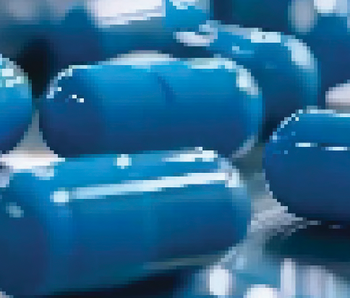
- August 2018
- Volume 3
- Issue 4
Dimorphic Fungal Pathogen May Be Causing Fatal Infections in Western US and Canada
New geographical spread of the disease may warrant increased vigilance among labs and clinicians.
A new potentially fatal fungal infection may be on the rise in the western regions of North America, according to new research.1
Blastomyces helicus, a dimorphic fungal pathogen, has remained a mystery to researchers and clinicians alike. Although it was initially identified in samples taken from the brain and lungs of a man who died of encephalitis in Alberta, Canada—his initial diagnosis was blastomycosis— the geographic range, epidemiology, and clinical features of disease-causing B helicus remain unknown. The findings of the study, however, suggest that it may be the cause of fatal infections in the western United States and Canada.
“Fungi are important pathogens of humans, animals, and plants, and yet there is so much we do not yet understand about them,” lead author Ilan Schwartz MD, PhD, FRCPC, assistant professor, division of infectious diseases, University of Alberta, Edmonton, Canada, told Contagion®. “A medically important but poorly understood group of fungi are the dimorphic fungi that cause the endemic mycoses. For many years, mycologists have noted differences in some strains of fungi that caused blastomycosis in different regions, but the availability of genetic analysis has now clarified the relationship of these fungi.”
According to Dr. Schwartz, the newly isolated fungi is related to, but distinct from, Blastomyces dermatitidis, which he describes as “the classic cause of blastomycosis.” Historically, B dermatitidis has been endemic in areas around the St. Lawrence and northern Mississippi rivers in the United States and Canada. It is found most commonly in animals and, occasionally in humans. The US Centers for Disease Control and Prevention estimates that the annual incidence rate of blastomycosis, in humans, is roughly 1 to 2 per 100,000 individuals.2
For their research, Dr. Schwartz and colleague analyzed human and veterinary isolates of B helicus identified from samples taken from blastomyces and Emmonsia cases collected at the University of Alberta, the University of Texas Health Science Center at San Antonio’s Fungus Testing Laboratory, and the ARUP Institute for Clinical and Experimental Pathology Laboratory. Isolates were selected based on low B dermatitidis DNA probe values (<400,000 relative light units) and/or atypical morphology. Nine isolates were obtained from the first 2 institutions. The authors then searched for additional cases by reviewing human emmonsia isolates collected since 2008 at ARUP, a national reference lab at the University of Utah.
THE POWER OF A TWEET
The search was prompted by a tweet3 on Twitter showing an image of an emmonsia isolate cultured at ARUP (see tweet).
“This tweet led us to search the database of ARUP Laboratories in Utah, and we identified 2 additional cases that were confirmed with sequencing,” Dr. Schwartz recalled. “In the words of my co-author, Lynne Sigler, ‘Finding a case through Twitter opens up a whole new way of finding and identifying fungal pathogens.’”
The team confirmed the species identification for the collected isolates via DNA sequence analysis, assessing the morphological features of isolates by comparing them with the ex-type culture of B helicus, which they called UAMH 7101. The isolates studied were grown on potato dextrose agar at 30°C and 35°C and on cereal agar, oatmeal salts agar, and Takashio agar at 25°C or 30°C to assess colonial features and transition to yeast phase and sporulation, respectively. The investigators then compared the sequences to those found in their respective laboratories or in the NCBI GenBank, the latter of which includes sequences of 5 Emmonsia species isolates obtained in 2009 that have now been reclassified B helicus. Finally, they performed antifungal susceptibility testing on the mold phases of the isolates using either the Clinical and Laboratory Standards Institute (CLSI) M38-A2 broth macrodilution method or the CLSI M38-A2 broth microdilution method with Sensititre Custom Plates. They then analyzed epidemiological and clinical data for each of the isolates.
FINDINGS
In all, Dr. Schwartz and his colleagues identified isolates from 10 human and 5 veterinary cases of B helicus infection, all of which originated in the western regions of Canada and the United States. These isolates were most frequently cultured from blood and bronchoaleveolar lavage in humans and from the lungs of the animal cases included in the study. They noted that the isolates remained “sterile in culture, producing neither conidia nor sexual spores in the mycelial phase.” However, the isolates frequently produced coiled hyphae. Their histopathological findings included pleomorphic, small or variably sized yeast-like cells, with single or multiple budding. These cells occasionally proliferated “to form short, branching, hyphal-like elements.” Within the sample population, the disease caused by B helicus carried a high fatality rate, although 6 of 7 of the human cases in the study were immunocompromised.
“We observed that the infection occurs primarily among immunocompromised hosts, and it is uncommon,” Dr. Schwartz said. “The threat posed by this fungus is relatively low. Although it is certainly underdiagnosed or misdiagnosed, reports of dimorphic fungal infections in the western parts of North America are rare. However, clinicians should be aware that dimorphic fungal infections can occur in patients who lack a history of residence in or travel to areas typically considered endemic.”
As a follow-up to their research, Dr. Schwartz added that he and his colleagues plan to reexamine local collections of fungi implicated in cases of blastomycosis in regions where B helicus is endemic and sample environmental sources for the fungus (eg, soils) in endemic areas to “identify the environmental reservoir.”
NOTE TO CLINICIANS AND LABS
Shaun Morris, MD, MPH, FRCPC, FAAP, clinician-scientist, Division of Infectious Diseases, Hospital for Sick Children and associate professor, Department of Pediatrics, University of Toronto, Canada, who has treated patients with blastomycosis and written about it in several peer-reviewed journal articles on the infection and B dermatitidis, told Contagion® that the findings of Schwartz et al are notable because of the differences between B helicus and the more well-known species of the fungus.
“B dermatitidis is fairly well described and probably the most important of the dimorphic fungi,” said Dr. Morris, who was not part of the B helicus team. “But this is a newly recognized species, and it has some pretty significant differences from the species that are more understood, such as the geographic region where it’s found, the types of humans and animals it affects, how it presents, and, in the case of humans, the mortality associated with it.”
Although Dr. Morris was quick to emphasize that the B helicus research still needs to be confirmed and expanded upon, through the analysis of more isolates, it raises some alarm bells because “blastomycosis is a notoriously late diagnosis even in highly endemic areas.”
Given the “new geography” of B helicus, the western United States and Canada, physicians and labs should be more vigilant for the new species going forward, particularly until more is learned about the fungi.
“Historically, at least, B dermatitidis has generally infected people with intact functioning immune systems,” he added. “However, in this study, 6 of the 7 humans were immunocompromised. These organisms exist in nature. In the case of B helicus, it seems, in the environment of small mammals. So the risk factors for infections caused by B helicus may be different as well, and that’s very significant.”
Brian P. Dunleavy is a medical writer and editor based in New York. His work has appeared in numerous health care—related publications. He is the former editor of Infectious Disease Special Edition.
Images credit to Schwartz IS, Wiederhold NP, Hanson KE, Patterson TF, Sigler L; Blastomyces helicus, a new dimorphic fungus causing fatal pulmonary and systemic disease in humans and animals in Western Canada and the United States, Clin Infect Dis. 2018 Jun 7:[Epub ahead of print]. By permission of the Infectious Diseases Society of America and the HIV Medicine Association.
Tweet image credit: Kyle Hueth @pathology_nerd via Twitter.
References:
- Schwartz IS, Wiederhold NP, Hanson KE, Patterson TF, Sigler L. Blastomyces helicus, a new dimorphic fungus causing fatal pulmonary and systemic disease in humans and animals in western Canada and United States [published online June 7, 2018]. Clin Infect Dis. doi: 10.1093/cid/ciy483.
- Blastomycosis. US Centers for Disease Control and Prevention website. cdc.gov/fungal/diseases/blastomycosis/index.html. Updated December 28, 2015. Accessed July 1, 2018.
- @pathology_nerd. Homeless HIV+, Hodgkin's Lymphoma patient septic with Emmonsia sp. in W. US. Usually found in S. Africa..#pathology. https://twitter.com/pathology_nerd/status/421939727629963264. Posted January 11, 2014.
Articles in this issue
over 7 years ago
Antibiograms for Optimizing Empiric Therapy: Use Them Wiselyover 7 years ago
Coffee, Donuts, and Antimicrobial Stewardshipover 7 years ago
FMT Proves to Be Effective and Acceptable Treatment for rCDIover 7 years ago
An Unexpected Meningitis CulpritNewsletter
Stay ahead of emerging infectious disease threats with expert insights and breaking research. Subscribe now to get updates delivered straight to your inbox.
































































































































































































































































































































